Why the best data scientists think more like artists than you might expect
When someone says, “data science” – most minds leap to a cold place: equations, algorithms, dashboards glowing with KPIs. What they don’t picture is a brushstroke. A blank canvas. A flash of intuition. And yet, creativity may be the most underappreciated force behind the art hidden in algorithms.
Because beneath the code and charts lies a deep well of imagination. And that’s not a poetic exaggeration—it’s the truth.
Data Science is wildly creative.
Not because it lacks logic- But because it demands imagination at every level.
- Creativity Begins with the Question
Before you touch a line of code, before you clean your first row—everything begins with a question. And the difference between a forgettable analysis and a game-changing insight often lies in how that question is framed.
Anyone can ask, “What causes churn?”
But it takes creativity to ask,
“What patterns whisper that someone’s drifting—before they even realize it?”
That’s not just curiosity. That’s creative reframing.
Data science isn’t just answering questions. It’s learning to ask better ones.
- Data Wrangling Is a Form of Sculpture
Real-world data is rarely pristine. It’s messy, fractured, incomplete. In other words: it’s raw clay.
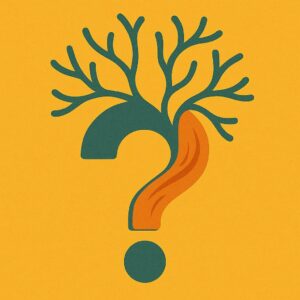
Cleaning it, shaping it, transforming it—that’s not grunt work. That’s art.
It’s Michelangelo chipping away everything that isn’t David.
Here’s a Python example where code meets creativity:
#Raw timestamp processing
df['timestamp'] = pd.to_datetime(df['timestamp'])
df['hour'] = df['timestamp'].dt.hour
#Add segmentation
def label_hour(h):
if 0 <= h < 6:
return "Night Owl"
elif 6 <= h < 12:
return "Early Bird"
elif 12 <= h < 18:
return "Day Crawler"
else:
return "Evening Hustler"
df['user_type'] = df['hour'].apply(label_hour)
What looks like a few lines of code is really a mini-story—about how people live, when they click, and what that might mean.
- Visualization: Insight, Illustrated
There’s an old saying: “If you torture the data long enough, it will confess.” But sometimes, you don’t need to interrogate it—you just need to see it. The best data visualizations don’t just communicate—they reveal. They shift perspectives. They draw the unseen into the light.
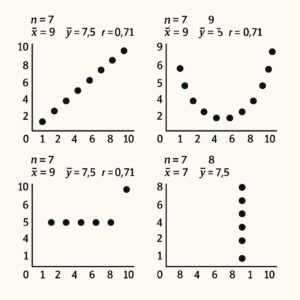
Think of the classic Anscombe’s Quartet: Four datasets. Nearly identical summary statistics. But when you plot them? Four wildly different stories.
- Same stats, different stories.
-
Numbers can mislead. Pictures rarely do.
- Translating the Invisible
Your model might be Nobel-worthy. But if your product team can’t grasp it, it might as well be a haiku written in Klingon.
Creative communication is what turns 95% accuracy into:
“Here’s how this model will change what our users see tomorrow.”
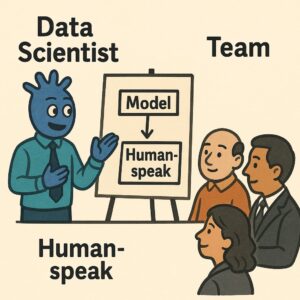
The best data scientists are part statistician, part interpreter, part storyteller.
They don’t just show the math.
They make the math matter.
- Machine Learning as Improvisation
Even the modeling phase—often seen as the most technical part—is steeped in creative decision-making:
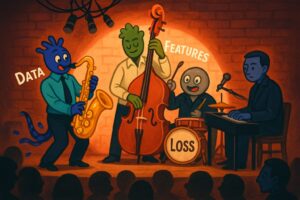
You’re not building a perfect machine.
You’re composing a performance—and the audience is the business, the user, the world.
So, Can Data Science Be Creative?
Not only can it be—it already is.
But not in the way most people think.
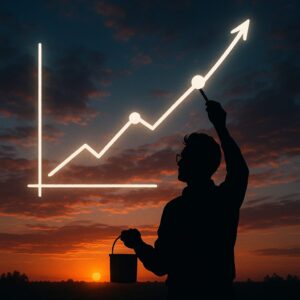
It’s not about painting with pixels or building visualizations with flair.
It’s about seeing what others don’t see,
Asking what others don’t ask,
And imagining what the data could become- before a single line is written.
Because in a world drowning in dashboards and automated models,
Original thought is the rarest—and most valuable—signal of all.
Now, just like Data Science, let’s get creative in our own way:
It’s the creativity of the detective, not the painter.
The vision of the architect, not just the engineer.
The elegance of the poet – working in logic, not lines.
When done well, Data Science doesn’t just describe the world.
It imagines what’s possible – and then builds the bridge.
Drop your favorite “creative data moment” in the comments.
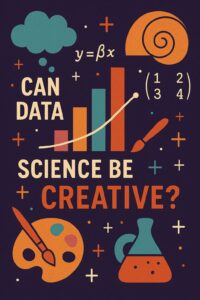
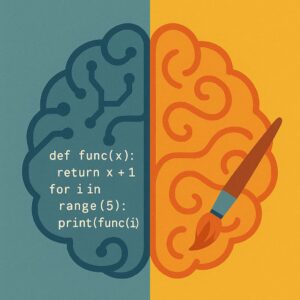
I used clustering to uncover hidden customer segments-changed our entire strategy.
Websitesi Satın al
Hello my loved one I want to say that this post is amazing great written and include almost all significant infos I would like to look extra posts like this
Somebody essentially lend a hand to make significantly articles Id state That is the very first time I frequented your website page and up to now I surprised with the research you made to make this actual submit amazing Wonderful task
you are truly a just right webmaster The site loading speed is incredible It kind of feels that youre doing any distinctive trick In addition The contents are masterwork you have done a great activity in this matter
Thanks I have recently been looking for info about this subject for a while and yours is the greatest I have discovered so far However what in regards to the bottom line Are you certain in regards to the supply
Usually I do not read article on blogs however I would like to say that this writeup very compelled me to take a look at and do so Your writing taste has been amazed me Thanks quite nice post